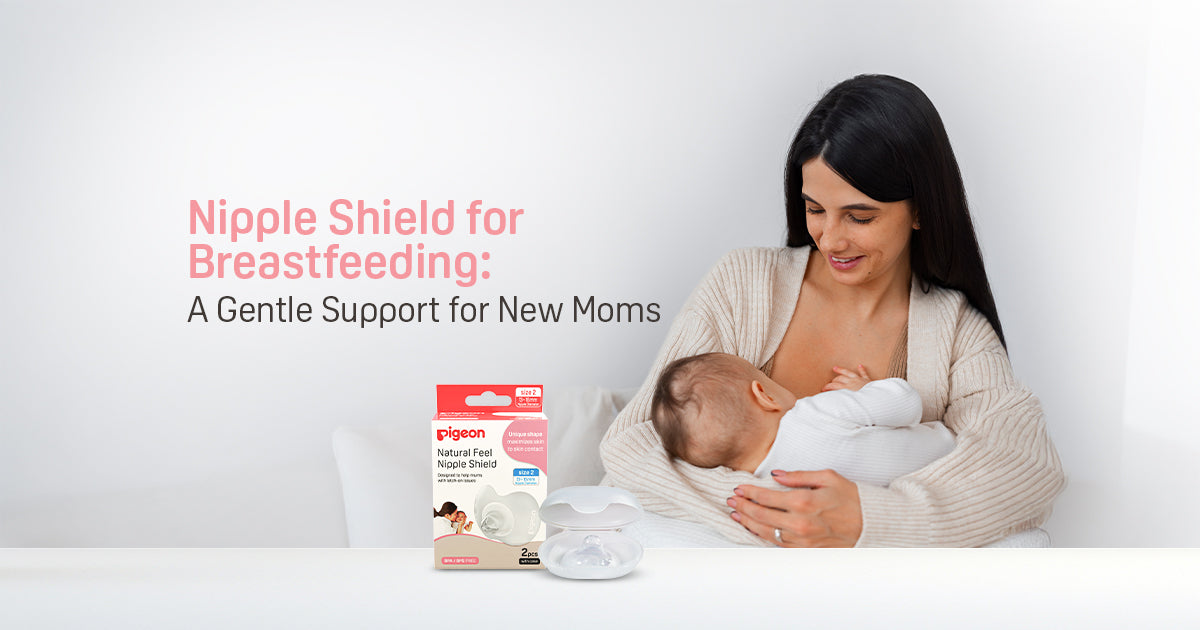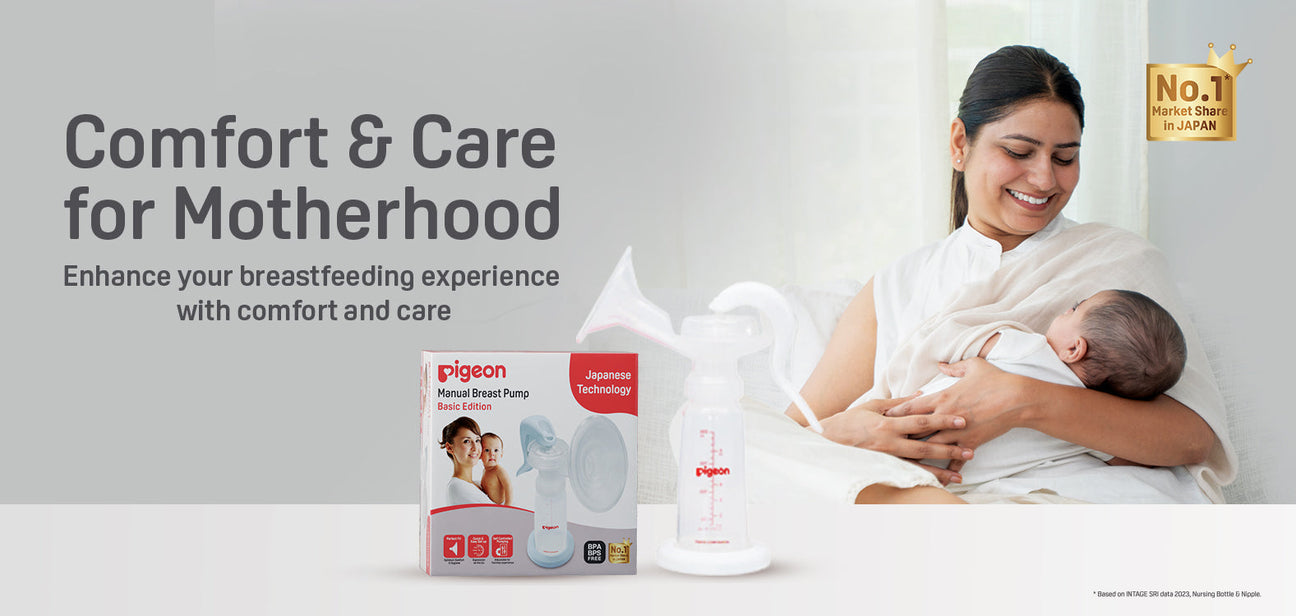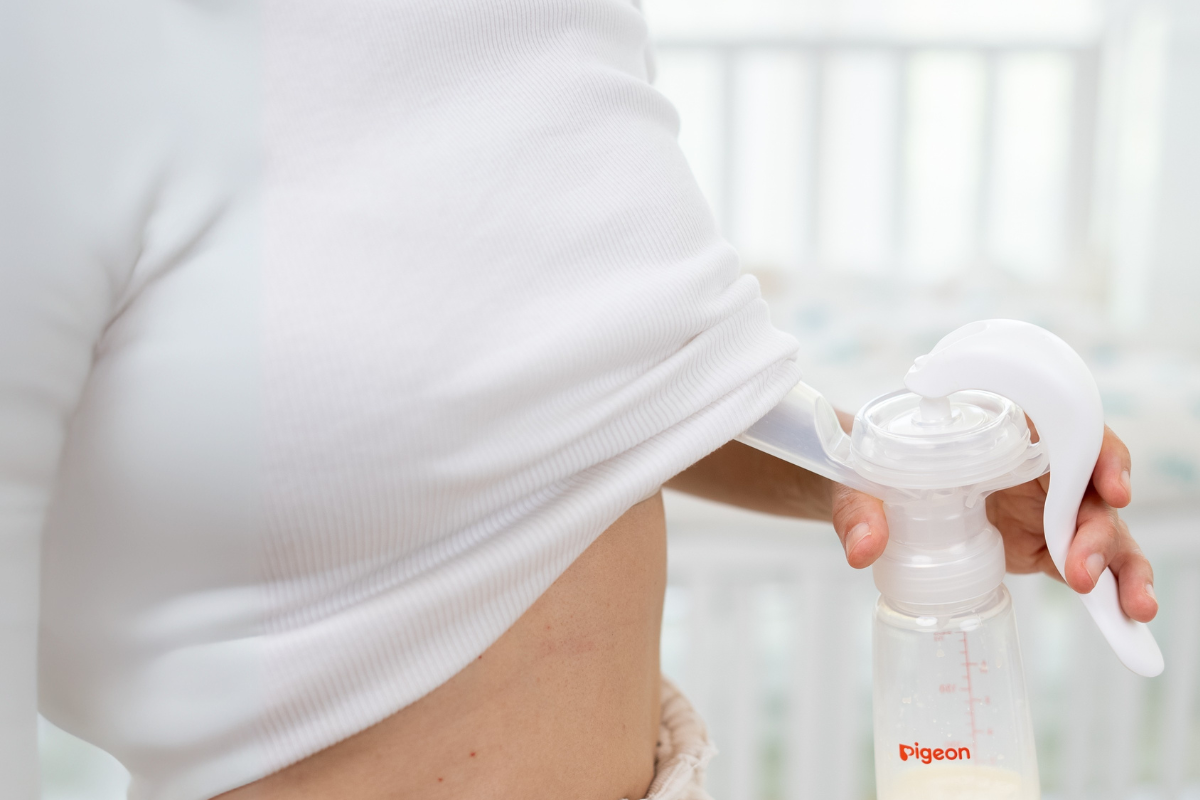Choosing the right breast pump is an important decision for new mothers in India as it directly affects feeding routines and convenience. Understanding the differences in operation, efficiency, and usability can help parents make an informed choice for their unique needs.
Manual pumps offer control over suction and pace, while an electric breast pump can save time and provide consistent expression. Each type has distinct features suited to different lifestyles, making it essential to consider personal requirements. At Pigeon, we provide trusted baby-care solutions and support to help new mothers select the right breast pump.
What Are Manual Breast Pumps and How Do They Work?
Manual breast pumps are hand-operated devices designed to help mothers express milk by creating suction through a lever or handle. The mother controls the speed and strength of the suction according to her comfort.
Advantages of Manual Breast Pumps:
-
Lightweight and compact, making them easy to carry and store anywhere.
-
Can be used at home or while traveling since they do not need electricity or batteries.
-
Simple to assemble, clean, and maintain without complicated parts.
-
Allows mothers to control the suction and speed for a comfortable and personalized experience.
Limitations of Manual Breast Pumps:
-
Requires physical effort from the mother to operate, which may be tiring over time.
-
The pumping process takes longer than with electric pumps which makes it less suitable for mothers who need to express milk frequently.
-
It is not ideal for long periods due to the physical strain involved.
How Do Electric Breast Pumps Work and Who Are They For?
Electric breast pumps are motorized devices that create suction to help mothers express milk efficiently. They can be used with one or both breasts, depending on the pump type. These pumps are designed for mothers who need a reliable, faster option for regular milk expression.
Advantages of Electric Breast Pumps:
-
Provides faster and more consistent milk expression compared to manual pumps.
-
Reduces physical effort since the motor does most of the work.
-
Adjustable suction and speed settings for comfort and efficiency.
-
The double pumping option allows expressing milk from both breasts simultaneously, saving time.
Limitations of Electric Breast Pumps:
-
Typically heavier and less portable than manual pumps.
-
Requires electricity or batteries to operate, limiting usage in some situations.
-
More expensive than manual pumps, which may not suit all budgets.
Comparing Manual and Electric Breast Pumps for Indian Moms
Manual and electric breast pumps both serve the same purpose, but they differ in how they fit into a mother’s daily routine, convenience, and long-term needs. The table below highlights key distinctions that can help parents understand which option may suit them better:
|
Feature |
Manual Breast Pump |
Electric Breast Pump |
|
Speed & Efficiency |
Works at the pace of the user; best for occasional or short sessions |
Uses motorized suction to express milk faster; suitable for frequent use or higher volume |
|
Portability & Convenience |
Lightweight and easy to carry; no reliance on electricity |
Larger and heavier; requires power or batteries, less suited for travel |
|
Cost |
Low initial investment; affordable for short-term use |
Higher purchase cost, often chosen for regular or long-term use |
|
Ease of Use |
Entirely hand-operated, may need effort over time |
Motorized operation reduces effort; can be adjusted for individual comfort and speed |
How Pigeon Supports Moms With Reliable Breast Pump Options
At Pigeon, we understand that each mother’s breastfeeding routine is different, and having the right tools can make a meaningful difference. We offer breast pumps designed to fit diverse needs, providing efficiency, guidance, and safety. Our products help mothers express and store milk effectively while managing their daily schedules.
Gomini Plus Electric Breast Pump Single – WN
We designed the Gomini Plus Electric Breast Pump Single – WN for mothers who need a fast and consistent way to express milk. It uses a motorized system for single-breast expression and is ideal for frequent use. Adjustable suction ensures comfort, while the compact, easy-to-use design supports a smooth and efficient pumping routine.

Manual Breast Pump Essential
At Pigeon, our Manual Breast Pump Essential is designed for mothers who prefer a slower, hands-on approach. Lightweight and portable, it can be used anywhere without electricity, making occasional pumping simple. It features unique silicone, a fully adjustable pumping system, a one-hand mechanism, and an ergonomically designed handle. The breastfeeding pump manual provides clear guidance to help express milk safely and comfortably.

Final Thoughts
Choosing the right breast pump can make a real difference in a new mom’s daily routine. Whether it’s the hands-on control of a manual pump or the speed and ease of an electric option, understanding your lifestyle, schedule, and needs helps you make a confident choice.
Finding a pump that fits naturally into your day can ease the challenges of feeding and managing time. At Pigeon, we focus on creating pumps that combine comfort, efficiency, and safety, supporting mothers in expressing and storing milk while maintaining a smooth daily routine.
FAQs
Q. Is it good to use a manual breast pump?
A. Yes, a manual breast pump is suitable for mothers who pump occasionally or prefer a hands-on, controlled approach to expressing milk.
Q. How to use a breast pump manually?
A. To use a breast feeding pump manually, position the breast shield over your nipple, create a secure seal, and gently operate the handle with a steady rhythm to express milk comfortably and efficiently.
Q. Which is the best electric breast pump?
A. The best electric breast pump in India is one that offers adjustable suction, efficient milk expression, and comfort, making it suitable for mothers who need to pump frequently or want a faster, hands-free option.
Q. Is it good to use an electric breast pump?
A. Yes, electric pumps are ideal for mothers who need faster, consistent milk expression and want to reduce physical effort while pumping.







































